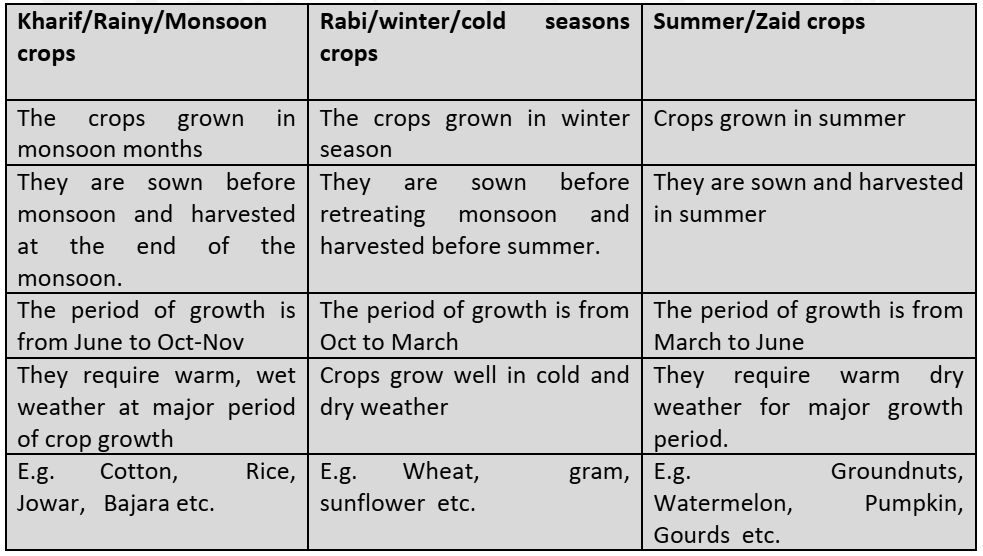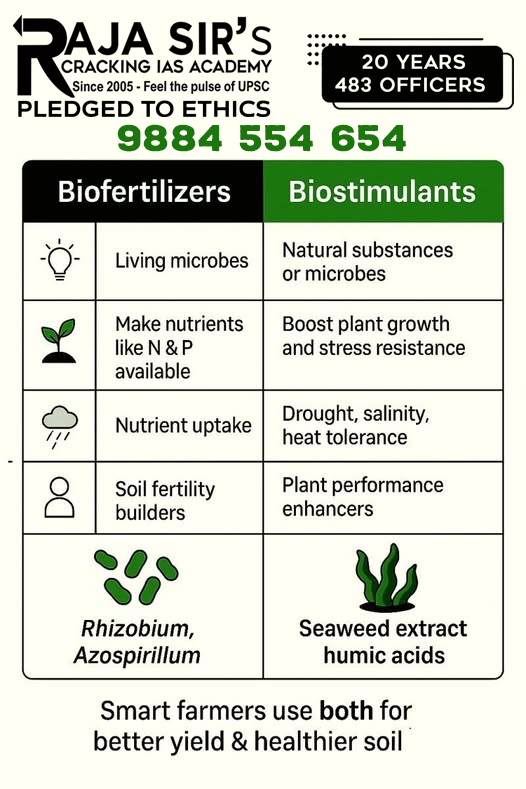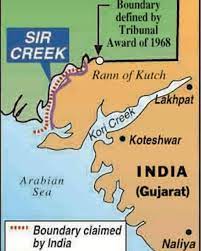- Home
- Prelims
- Mains
- Current Affairs
- Study Materials
- Test Series
 EDITORIALS & ARTICLES
EDITORIALS & ARTICLES
October 3, 2025 Current Affairs
Monument Conservation Opens to the Private Sector
- For the first time, the government plans to allow private players to conserve protected monuments, ending the Archaeological Survey of India’s (ASI) monopoly.
- Through a public-private partnership (PPP) framework, the new model involves corporates, PSUs, and private organisations.
Implementation Framework
- Funds will be routed via National Culture Fund (NCF), which offers 100% tax exemptions for donations.
- Donors can select empanelled conservation architects (to be shortlisted by the Ministry of Culture) and hire external implementing agencies.
- All projects must follow the National Policy for Conservation of Ancient Monuments, 2014, and submit detailed project reports (DPRs) for ASI approval.
- Initially, a list of 250 monuments will be offered for donor participation.
|
|
Archaeological Survey of India (ASI)
|
UPSC Enters 100th Year of Service
- The Union Public Service Commission (UPSC) marks 100 years of its establishment on October 1, reaffirming its role as the guardian of meritocracy and fairness in India’s governance.
|
Union Public Service Commission (UPSC)
- UPSC is an independent constitutional body under Part XIV (Article 315-323) of the Indian Constitution.
- It was established on 1 October 1926 as the Public Service Commission based on recommendations of the Lee Commission (1924), which was later reconstituted as the Federal Public Service Commission by the Government of India Act 1935.
- It was renamed the Union Public Service Commission after independence in 1947.
Internet Shutdown in India
- The Uttar Pradesh government ordered a 48-hour internet suspension in Bareilly to maintain law and order during Dussehra festivities.
Internet Shutdown Framework in India
- Legal Framework: The Telecommunications Act of 2023 and Suspension Rules of 2024 provide the legal basis for suspending internet services.
- Government Authority: Section 20 of the act authorises both central and state governments to impose shutdowns under specific public concern conditions.
- Decision-Making Power: Union or State Home Secretaries can issue shutdown orders, with Joint Secretaries authorised only in urgent emergencies.
- Grounds: Internet shutdowns may be imposed during emergencies, sovereignty threats, security concerns, risks to foreign relations, public disorder, or incitement to offences.
- Duration Limit: Each order under the 2024 Rules is limited to 15 days. However, successive renewals are legally allowed, which could lead to indefinite shutdowns through repeated short-term orders.
- Order Requirements: Written shutdown orders must specify reasons, set a precise duration, and demarcate the affected geographic area.
- Enforcement: Telecom providers are required to appoint nodal officers in each state or union territory for the quick implementation of shutdowns.
- Oversight Review: Orders are reviewed within five days by committees led by the Cabinet Secretary at the centre and Chief Secretaries at the state level.
- Use Restrictions: Shutdowns are intended as last-resort measures and cannot be used as routine law enforcement tools.
Internet Shutdown Landscape in India
- Shutdown Numbers: 84 internet shutdowns occurred in 2024, representing 28% of worldwide cases, down from 113 in 2023.
- Global Standing: India ranked second globally for internet shutdowns in 2024, with Myanmar reporting the highest at 85 cases.
- Regional Distribution: Manipur (21), Haryana (12), and Jammu & Kashmir (12) saw the most shutdowns during the year.
- Shutdown Triggers: Protests (41), communal clashes (23), & exam security (5) were the main causes of internet shutdowns.
- Duration Lost: Internet services were suspended for 3,160 hours in 2024, nearly 132 days.
- Economic Costs: Shutdowns cost India ~$322 million in 2024, ranking it the sixth highest globally for economic losses.
Bagram Air Base
- US President Donald Trump demanded the return of Bagram Air Base (Afghanistan), arguing it was key to countering China’s nuclear facilities in Xinjiang.
Significance of Bagram
- Strategic Location: Located in Parwan province, Bagram links major Afghan highways, making it a vital gateway to Central and South Asia.
- Counterterrorism Role: Served as the epicentre of the “War on Terror,” enabling strikes on Al-Qaeda, Taliban, IS-K and other terror groups.
- Mineral Wealth Leverage: Control of Bagram offers access to Afghanistan’s $1–3 trillion mineral reserves, critical for EVs, electronics, and defence technologies.
- Proximity to Rivals: From Bagram, US ISR (intelligence, surveillance, reconnaissance) could monitor China’s Xinjiang and Russia’s Central Asian sphere.
Challenges to US Re-entry
- Taliban’s Resistance: Firm rejection of any foreign bases, framing it as a violation of Afghan sovereignty.
- Regional Pushback: China, Russia, Iran, and Pakistan oppose US return, seeing it as a destabilising action.
- Operational Costs: Reoccupation would require 10,000+ troops and billions in reconstruction, making it both politically and militarily costly.
- China’s Defence Posture: Beijing’s rapid nuclear modernisation (JL-3 SLBM, missile silos, mobile systems) makes Bagram a flashpoint in US-China rivalry.
Implications for India
- Heightened Terror Risk: Absence of US monitoring allows LeT & JeM greater freedom in Afghan soil.
- China Factor: Any Chinese foothold would tighten India’s encirclement under Beijing’s “String of Pearls.”
- Strategic Leverage Loss: Earlier, India benefited indirectly from the US presence; now focus has shifted to diplomatic engagement & aid.
- Connectivity Impact: Projects like Chabahar Port–Afghanistan–Central Asia corridor face uncertainty.
International Health Regulations Amendment
- The amendments to the International Health Regulations have come into effect, introducing the new definition of “Pandemic Emergency” into global health law.
|
Key Amendments
- The amendments of 2024 introduced a separate legal classification called “Pandemic Emergency.”
- A pandemic emergency is a disease outbreak across multiple countries that overwhelms health systems, disrupts societies, and requires fast, equitable, and coordinated international action.
- They require each country to establish a National IHR Authority to coordinate the implementation of the regulations across government ministries.
- India’s Obligation: As a signatory, India must establish a National IHR Authority under the Ministry of Health & Family Welfare, enhance disease surveillance, & protect personal data during emergencies.
International Health Regulations (IHR)
- The IHR is a legally binding agreement that applies to 196 countries, including all 194 WHO Member States, and two non-members, Liechtenstein and the Holy See.
- Objective: To prevent, control, and provide a public health response to the international spread of diseases, while avoiding unnecessary interference with global traffic and trade.
- Origin: The 19th-century cholera outbreaks led to the first International Sanitary Regulations in 1951, which were renamed the International Health Regulations in 1969.
- Major Revision: After the 2003 SARS outbreak, it was revised to include any “public health emergency of international concern” (PHEIC), significantly broadening its scope.
- Compliance: The WHO and States Parties use Joint External Evaluations (JEE), which are voluntary, collaborative reviews conducted by international and national authorities to assess readiness.
Updated Rangarajan Poverty Line
- Recently, economists from the RBI updated the Rangarajan poverty line for 20 major states using the 2022-23 Household Consumption Expenditure Survey (HCES).
- The Rangarajan Committee (2014) set the poverty line at ₹972 (rural) and ₹1,407 (urban) monthly per capita expenditure, placing 29.5% of the population below the poverty line (BPL).
|
Key Findings of the Survey
- Odisha and Bihar showed the sharpest improvement in poverty reduction over the last decade.
- Rural Odisha: Poverty declined from 47.8% (2011-12) to 8.6% (2022-23), the steepest fall in the country.
- Urban Bihar: Poverty fell from 50.8% to 9.1% in the same period.
- The least decline was recorded in Kerala and Himachal Pradesh, though both already had low poverty levels.
- Rural Poverty: In 2022-23, the lowest poverty rate was in Himachal Pradesh (0.4%), and the highest was in Chhattisgarh (25.1%).
- Urban Poverty: The lowest poverty rate was in Tamil Nadu (1.9%), and the highest was in Chhattisgarh (13.3%).
Methodology Adopted
- RBI economists did not simply inflate Rangarajan’s line with the Consumer Price Index (CPI) because consumption baskets differ.
- Instead, they constructed a new price index reflecting the Rangarajan poverty line basket (PLB) weights (food, non-food). This was then applied to update the 2011-12 poverty lines to 2022-23.
Shift to Multidimensional Poverty
- The Government now focuses more on the Multidimensional Poverty Index (MPI) than income/expenditure-based poverty lines.
- MPI measures deprivation across health, education, and living standards using 12 indicators (nutrition, child mortality, sanitation, electricity, etc.).
- According to NITI Aayog (Jan 2024), 24.82 crore people exited multidimensional poverty between 2013-14 and 2022-23.
- Also, MPI fell from 29.17% to 11.28% in this period.
- According to the World Bank, India’s poverty headcount ratio stood at 23.9% in 2022 at the international poverty line of $4.2/day.
NITI Aayog’s Suggestions to Combat Poverty
- Smart Targeting: Improve targeting using technology (JAM trinity) to minimise inclusion and exclusion.
- Capability enhancement: Invest in education and skills following Amartya Sen’s “Development as Freedom,” enabling empowerment and entrepreneurship, especially among the urban poor.
- Digital Push: Strengthen rural digital infrastructure, expand awareness campaigns, and securely integrate Jan Dhan accounts with digital payments.
- State Competition: Use outcome-based indices in health, water, and education to deepen cooperative and competitive federalism.
- Knowledge Sharing: Scale up the Transforming India Lecture Series to share global best practices, innovation, and governance models with policymakers.
Govt Raises MSP for Six Rabi Crops
- The Union Cabinet approved significant hikes in Minimum Support Prices (MSPs) for six rabi crops for the 2026-27 marketing season.
|
Key Highlights
- Coverage: Includes Wheat, jowar, barley, gram, and lentil.
- Wheat Hike: MSP raised by ₹160 per quintal to ₹2,585/quintal (6.6% increase), giving farmers the highest gain over cost of production (109%).
- Safflower: Recorded the highest absolute and percentage increase (Rs 600 per quintal), reflecting government efforts to promote oilseed cultivation and crop diversification.
|
Process to Determine Minimum Support Price (MSP)
|

Government Restricts Animal-Based Bio-Stimulants
- The Union Agriculture Ministry has recently withdrawn approval for 11 animal-derived biostimulants, citing concerns related to religious and dietary restrictions.
Biostimulants
- Biostimulants are substances or microorganisms applied to plants, seeds, or soil that promote natural processes to improve growth, quality, and stress resilience.
- Key Distinctness: They do not directly provide nutrients like fertilisers nor function as pesticides; instead, they help plants utilise existing nutrients more efficiently.
- Main Sources: Biostimulants are derived from microbes, algae, seaweed extracts, humic acids, protein hydrolysates, beneficial microorganisms, and composted organic matter.
- Complexity: Their diverse and partially understood mechanisms make outcomes unpredictable, necessitating scientific trials and localized agronomic recommendations.
Types of Biostimulants
- Humic and Fulvic Acids: Humic and fulvic acids from decomposed organic matter increase soil porosity, enhance water retention, and improve nutrient absorption.
- Seaweed Extracts: Seaweed and algal extracts contain natural hormones and bioactive compounds that stimulate growth and increase tolerance to abiotic stress factors.
- Protein Hydrolysates: Amino acids and protein hydrolysates stimulate plant metabolism, aiding recovery and yield during heat and drought conditions.
- Beneficial Microbes: Beneficial bacteria (e.g., Rhizobium) and fungi (e.g., mycorrhiza) enhance root growth, nitrogen fixation, and phosphorus absorption.
- Bioactive Compounds: Substances like vitamins and antioxidants trigger plant defence responses, strengthening resilience and improving produce quality during stress.
- FCO Classification: Schedule VI of the 2021 FCO amendment categorises nine groups of biostimulants with specified standards and claims.
Biostimulants Regulation Framework in India
- FCO Coverage: Biostimulants were brought under the Fertiliser (Inorganic, Organic or Mixed) (Control) Order, 1985, through a 2021 amendment.
- Approval Requirement: No biostimulant can be manufactured, sold, or imported unless it is notified and listed in Schedule VI of the Fertiliser Control Order by the Central Government.
- Central Committee: The Central Biostimulant Committee was formed in 2021 under the Ministry of Agriculture to review evidence, set specifications, and advise the government.
- Residue Limit: The permissible pesticide residue limit for biostimulants, initially 0.01 ppm, was increased to 1.0 ppm through a 2024 amendment.
Biostimulants Landscape in India
- Market Growth: The Indian biostimulant market was valued at $355 million in 2024 and is projected to surpass USD 1.13 billion by 2032, with a compound annual growth rate of more than 15%.
- Major Crops: Cereals such as wheat, rice, and maize account for the largest share due to their cultivation scale and responsiveness to biostimulants.
- Active Ingredient: Seaweed extracts dominate as the largest ingredient segment because of proven efficacy, availability, and favourable regulatory recognition.
- Common Application: Foliar spraying is the most prevalent method, enabling rapid nutrient uptake and improved stress resilience in crops.
 SARAL Tool by ANRF
SARAL Tool by ANRF
- The Anusandhan National Research Foundation (ANRF) has developed a tool called SARAL to make scientific research more accessible.
- SARAL (Simplified and Automated Research Amplification and Learning) is an AI-based tool that converts complex research papers into easy-to-understand summaries.
Anusandhan National Research Foundation (ANRF)
- The ANRF is an apex body established to promote R&D and foster a culture of research & innovation throughout India’s Universities, Research Institutions, and R&D laboratories.
- It was established by the ANRF Act, 2023, in alignment with the NEP 2020, replacing the Science and Engineering Research Board (SERB).
- Expanded Scope: It broadens the definition of research to cover the humanities and social sciences; it can also receive funding from both public and private sources, unlike the SERB.
- Structure: The ANRF operates under the Department of Science and Technology, where policies are shaped by a Governing Board led by the Prime Minister.
150 Years of the National Song Vande Mataram
- The Union Cabinet will celebrate 150 years of the national song, ‘Vande Mataram‘, throughout India, honouring its role in the freedom struggle.
National Song
- The song Vande Mataram was composed in Sanskrit by Bankimchandra Chatterji in 1875 and featured in his novel Anand Math (1882).
- Dr Rajendra Prasad officially designated it as the national song in the Constituent Assembly on January 24, 1950, stating it would hold equal status with the national anthem, Jana Gana Mana.
- The Constitution of India, under Article 51A(a), requires citizens to respect the Constitution, its ideals, institutions, the National Flag, and the National Anthem, but does not mention the national song.
Sir Creek
India’s Defence Minister cautioned Pakistan on military activities near Sir Creek and recalled Operation Sindoor to emphasise India’s ability to respond effectively.

- Sir Creek is a 96-kilometre tidal estuary in the marshy Rann of Kutch. It flows into the Arabian Sea and roughly separates Pakistan’s Sindh province from Gujarat’s Kutch region.
- Originally called Ban Ganga, it was renamed Sir Creek after a British surveyor during colonial mapping.
- Importance: It has valuable fishing areas, possible oil and gas reserves, and its boundary determines the Exclusive Economic Zone; its proximity to Karachi also makes it essential for naval security.
The Dispute Regarding Sir Creek
- The Sir Creek dispute arises from differing interpretations of the maritime boundary between Kutch and Sindh, which were part of the Bombay Presidency before 1947.
- India’s Claim: The boundary should follow the mid-channel of the creek, apply the Thalweg principle, and insist on a bilateral settlement under the 1972 Simla Agreement.
- Pakistan’s Claim: Pakistan asserts the boundary lies along the eastern bank, known as the Green Line, under the Bombay Government Resolution of 1914, giving it control over the entire creek.
- Pakistan states that the Thalweg Principle doesn’t apply to Sir Creek because it’s not navigable.
|









 Latest News
Latest News General Studies
General Studies